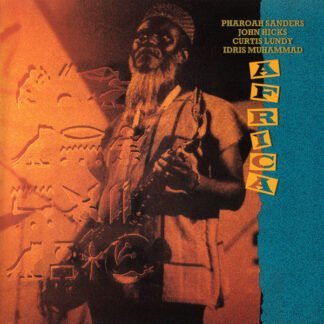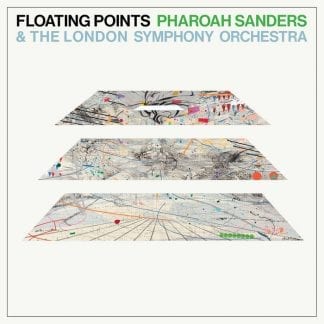Description
Originally Sanders was interested in urban blues music, but his high school teacher exposed him to jazz and this took Farrell in an entirely new direction. Once completing high school Sanders quickly packed his belongings and headed to Oakland, where he got a chance to work with musicians of high caliber such as saxophone players Sonny Simmons and Dewey Redman (who were both later to be major forces in new jazz and free jazz). Soon the young Pharoah would meet John Coltrane and would feel being attracted to the life as a professional musician. By the early sixties Sanders moved to New York where the major jazz scene was happening. Here he’d spent most his time honing his skills at rehearsals with Sun Ra….sadly he was not making much money with the Arkestra and soon found himself living on the streets, trying to stay up all night playing and then scrounging for money during the day, often selling blood to eat.
Sanders recorded his debut album for ESP soon after, but it wasn’t until he started playing with his old friend John Coltrane that he would fully unleash the fury of his saxophone on the world of free jazz. The records Pharoah Sanders played on for Coltrane laid the foundation of what was to come for both the world of free jazz and for Sanders as a musician. After Coltrane’s tragic death Sanders would record further with Alice Coltrane, John’s widow, on the album Karma (1969 – Impulse!), which is universally accepted as Sanders’ masterpiece. Along with musicians Alice Coltrane and singer Leon Thomas, Sanders helped to create the genre of spiritual jazz.
On this (harder to find) album we are presenting you today (Welcome to Love) you’ll find sublime French recordings (recorded in 1990-released in 1991). Here, Sanders plays with an all-star line-up consisting of Stafford James (Sun Ra) on bass, William Henderson (Roy Ayers) on piano & Eccleston W. Wainwright on drums. On Welcome to Love, the master saxophonist plays straight-up jazz, and the result is a gorgeous collection of ballads where you can really feel Sanders’ enormous self-reflection and homesickness. Sanders is famous for getting sounds out of his sax that no else can, but on these recordings he treats the songs with reverent lyricism on both tenor and soprano…each song is infused with a subtle emotional quality that simply does not let go.
Hailed as Sanders’ finest albums from his re-thinking period, in many ways, the album is a tribute to Coltrane’s Ballads album of 1961 but with Pharoah’s print marked all over it. Here the listener explores the gentler side of Pharoah Sanders…a jazz giant who is communicating subtly and serenely. His incredible technique is displayed not in furious runs but in exquisite note choices, the mark of the outstanding communicator as demonstrated in the art of the ballad. Sanders communicates with a warmth and tonal center that is unusual among present players and compares favorably to the many soprano sax greats that have preceded him.



